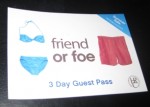 There’s a big fuss about the NY Times’s decision to start charging for access to its Web site. Many people, including me, are upset.
There’s a big fuss about the NY Times’s decision to start charging for access to its Web site. Many people, including me, are upset.
We started out paying for the paper (through a subscription or newsstand), then it went on the web, the price dropped, and now we’ve been trained to expect it for free.
The paper version is losing money – and so the online version must earn extra in order to cover the costs of printing and distributing the dead-tree paper. The bandwidth isn’t the problem. The paper and distribution is the problem.
Build a Community
The giant squids I’m talking about aren’t actual squids; it’s the nickname for the leaders of Squidoo (an online free publishing platform). Squidoo gives people the chance to share their passions, make money for charity, or run a business – for free. You make a page, called a lens, and connect to selected affiliate sites or your own. If someone buys something, you make money. Or, it goes to your favorite charity. There’s a community to answer questions, show you the ropes, and welcome you.
Add Free Prizes
Squidoo has “free prizes” – badges for people with great lenses, awards for best lens in different categories, and angels who bless lenses they like. They’re called Giant Squids, Squid Angels, and Squid Greeters. They get extra options and first crack at new tools for building lenses.
How about a badge system for newspaper readers to reward and highlight frequent viewers or commenters? Articles with more comments or comments by higher level people would be worth more to advertisers.
Reward Extra Effort
What if the paid version had no ads? Or, if visitors got points for viewing ads (and credit toward access). The more people “paid” to view the ad, the more the Times could charge the advertiser.
More points could get more prestige (and more incentive to return and see ads). Different point levels could entitle readers to extra services or goodies, such as access to restaurant reviews before they’re published, or inside tips on sales, or rights to free Kindle access.
What if they gave stuff away, but in a way that brought people in? Grew their tribe, encouraged communities of New York Times readers generally. They could if they wanted to. And, their readers would embrace them (rather than crying foul).
What are you doing in your business to build a community? What’s working? What fell flat? Share your experiences in the comments.
Image: wikimedia




